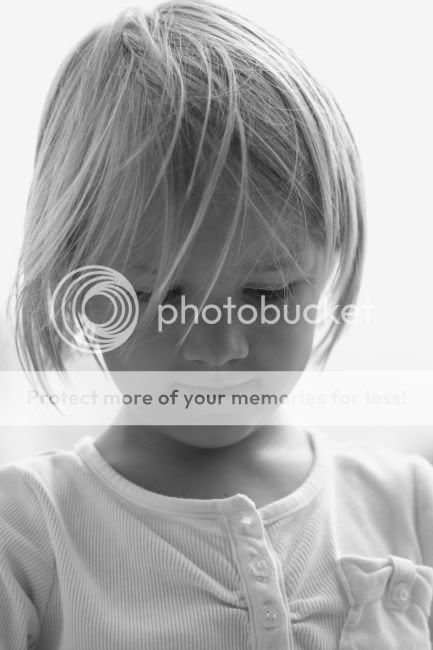Margo Stewart
New member
Hi all!
Honestly, I'm not sure that I'm posting this in the correct forum. If it needs to be somewhere else please feel free to boot my post to another forum.
I am a mom of 4 who's goal is to obtain good volleyball captures of my oldest as well as grow enough in portraiture photography to someday perhaps go into business. Who knows if I'll ever reach that goal but I'm at least trying to learn all I can for now.
I'm currently trying to really work on my focus and setting. I generally shoot in Manual if I can. I adjust the settings so that the little flashing dash on the line (-2, 1, triangle, 1, +2) is as close to the middle as I can get it. (How's that for technical information?! LOL) As you can imagine, this doesn't always work so I'm trying to learn how to do it the RIGHT way. One thing I think I've learned so far is that the reason I often have a very small area that is in focus is because I have my aperture too small. Is that right? It's either that or the whole "focuse/recompose" thing that I can't seem to figure out. It's always set on AF but I don't know what point to put where.
So here are a few shots I took earlier today trying to practice a bit. These were all shot with my Canon XTi using my 50mm 1.8 lens. I'd love any advice anyone has to offer on these.
ISO100, 1/800, 2.2 RAW
I was sitting on my front porch when my youngest came to show me a rolly polly she captured. What should I have had this on so that it wouldn't have been so bright? I edited this in DPP adding the monochrom effect and changed the WB to auto because it was pretty blue. I almost ALWAYS end up changing WB in DPP. I darkened it a bit too because it was SO bright, her left shoulder is really blown.

ISO100, 1/1000, 1.8 RAW
Another daughter, looking up at me as she's writing in her "bug log". If I had opened this up to more like 4.0 would my focus have been better? I notice that the focus seems to fall on her right shoulder and hair. It was a bit dark as well so I actually ran a basic color action on it in PS. She's not actually under the porch as far as I am here but I wonder if I should have changed the ISO to 200 for more favorable results?

ISO100, 1/1000, 4.0 RAW
Again, I'm thinking ISO should have been higher. ??? I did open this one up more and it seems to be better focused. One thing I'd like to learn is to do a backlit photo. I think that's what it's called, I'm referring to photos with a bright sun in the background and a couple or children where you really only see the silhouette's.

Am I on the right track? I know I have a LOT to learn so any advice as steps to take to achieve my goals would be much appreciated.
Thanks!
Margo
Honestly, I'm not sure that I'm posting this in the correct forum. If it needs to be somewhere else please feel free to boot my post to another forum.
I am a mom of 4 who's goal is to obtain good volleyball captures of my oldest as well as grow enough in portraiture photography to someday perhaps go into business. Who knows if I'll ever reach that goal but I'm at least trying to learn all I can for now.
I'm currently trying to really work on my focus and setting. I generally shoot in Manual if I can. I adjust the settings so that the little flashing dash on the line (-2, 1, triangle, 1, +2) is as close to the middle as I can get it. (How's that for technical information?! LOL) As you can imagine, this doesn't always work so I'm trying to learn how to do it the RIGHT way. One thing I think I've learned so far is that the reason I often have a very small area that is in focus is because I have my aperture too small. Is that right? It's either that or the whole "focuse/recompose" thing that I can't seem to figure out. It's always set on AF but I don't know what point to put where.
So here are a few shots I took earlier today trying to practice a bit. These were all shot with my Canon XTi using my 50mm 1.8 lens. I'd love any advice anyone has to offer on these.
ISO100, 1/800, 2.2 RAW
I was sitting on my front porch when my youngest came to show me a rolly polly she captured. What should I have had this on so that it wouldn't have been so bright? I edited this in DPP adding the monochrom effect and changed the WB to auto because it was pretty blue. I almost ALWAYS end up changing WB in DPP. I darkened it a bit too because it was SO bright, her left shoulder is really blown.

ISO100, 1/1000, 1.8 RAW
Another daughter, looking up at me as she's writing in her "bug log". If I had opened this up to more like 4.0 would my focus have been better? I notice that the focus seems to fall on her right shoulder and hair. It was a bit dark as well so I actually ran a basic color action on it in PS. She's not actually under the porch as far as I am here but I wonder if I should have changed the ISO to 200 for more favorable results?

ISO100, 1/1000, 4.0 RAW
Again, I'm thinking ISO should have been higher. ??? I did open this one up more and it seems to be better focused. One thing I'd like to learn is to do a backlit photo. I think that's what it's called, I'm referring to photos with a bright sun in the background and a couple or children where you really only see the silhouette's.

Am I on the right track? I know I have a LOT to learn so any advice as steps to take to achieve my goals would be much appreciated.
Thanks!
Margo
